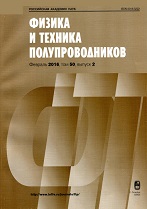|
This article is cited in 2 scientific papers (total in 2 papers)
Semiconductor physics
Surface modification of SOI sensors for the detection of RNA biomarkers
O. Naumovaa, B. I. Fomina, E. V. Dmitrienkob, I. A. Pyshnayab, D. V. Pyshnyib
a Rzhanov Institute of Semiconductor Physics, Siberian Branch of Russian Academy of Sciences, Novosibirsk
b Institute of Chemical Biology and Fundamental Medicine, Siberian Branch of the Russian Academy of Sciences, Novosibirsk
Abstract:
A new type of surface modification of multichannel sensors on a silicon-on-insulator base, which includes the use of a carbonyldiimidazole bifunctional reagent for the formation of an interfacial layer instead of modified silanes and probes for the specific detection of fragments of matrix troponin ribonucleic acid (analyte) as a marker of the cardiac infarction, is proposed. The influence of passivating the sensor surface activated by carbonyldiimidazole with glycine and aminoethanol at the final modification state on the response of sensors and the level of the background signal is investigated. It is shown that the proposed type of surface modification with glycine treatment provides a highly specific response of $\sim$60% in the case of a picomolar analyte concentration in the solution. Different mechanisms are responsible for an increase in the response and sensor specificity during analyte detection after passivation by glycine and aminoethanol.
Keywords:
biosensor, silicon-on-insulator, surface modification.
Received: 26.09.2019
Revised: 25.10.2019
Accepted: 04.11.2019
Citation:
O. Naumova, B. I. Fomin, E. V. Dmitrienko, I. A. Pyshnaya, D. V. Pyshnyi, “Surface modification of SOI sensors for the detection of RNA biomarkers”, Fizika i Tekhnika Poluprovodnikov, 54:4 (2020), 394–399; Semiconductors, 54:4 (2020), 471–475
Linking options:
https://www.mathnet.ru/eng/phts5249 https://www.mathnet.ru/eng/phts/v54/i4/p394
|


| Statistics & downloads: |
| Abstract page: | 48 | | Full-text PDF : | 12 |
|





 Contact us:
Contact us: Terms of Use
Terms of Use
 Registration to the website
Registration to the website Logotypes
Logotypes








 Citation in format
Citation in format 
